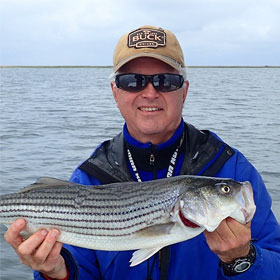Considerations For Choosing and Using Ice Fishing Lines
By Ken Schultz
Jan 08, 2025
Line is obviously a critical component of fishing, yet anglers often minimize the selection and care of it for general fishing purposes. When it comes to the specialized arena of ice fishing, there’s actually a lot to think about with respect to the types of lines available and the properties desirable in good ice fishing lines, be that for jigging, employing a tip-up, or using an ice house-mounted spool (“rattle reel”).
Basic Line Characteristics
Most general fishing, including ice fishing, is done with one of these three types:
• Monofilament Line: Generally pliable (flexible), retains memory, may absorb some amount of water, stretches, easy knot tying, has varying diameter and abrasion resistance.
• Fluorocarbon Line: Less visible due to low refractive index, good abrasion resistance, low stretch, good sensitivity, moderately stiff.
• Braided Line: Comparatively low diameter for strength, little to no stretch, advertised as having good abrasion resistance (although there is some disagreement on this), high sensitivity, flexible and supple, more visible than other lines.
Line Properties Desirable for Ice Fishing
These properties are desirable in ice fishing lines:
• Low memory: Low-memory lines are easier to work with when the air and water temperature is low. This may also be described as flexibility. Lines designed specifically for ice fishing are manufactured or treated (coated) to maintain suppleness.
• Good sensitivity: This is especially important for jigging and deep fishing, and is a feature of lines with little or no stretch.
• Above-Average Abrasion Resistance: This relates to ice contact and is most notable with fluorocarbon lines and those that are coated.
• Thin But Strong: Thin-diameter line is less visible, aids depth attainment and strike detection, and enhances live bait movement, but it must also be strong. Braided lines shine in this respect.
Ice Fishing Line Selection
There are many general-purpose fishing lines as well as some lines formulated specifically for ice fishing conditions. There’s plenty of personal preference in the selection of ice fishing lines.
Braided line is popular with tip-ups and mounted spools for strength and sensitivity and the fact that its low diameter allows you to fit more on a spool than other line types. Tip-up spools tend to have a small arbor, which can lead to coiling in monofilament, so the supple braid minimizes that problem. It’s also useful for deep fishing. Some folks prefer a vinyl-coated line or a fly fishing line with tip-ups and mounted spools because of less tangling and knotting (braid often gets problematic knots).
Many anglers use a leader of varying length (longer if the water is especially clear) tied with a line-to-line knot to the braid (or a swivel if using lures that spin). Fluorocarbon or fluorocarbon-copolymer hybrids are preferred. For toothy species, a wire leader may be necessary.
Some anglers use straight fluorocarbon on fishing reels because of its sink rate and low visibility, as well as greater sensitivity for jigging. Fluorocarbon is expensive with a lower life expectancy than equally expensive braid, so for cost effectiveness, more people use it as a leader. Still others use monofilament lines formulated for ice fishing on their jigging reels, in part because it’s easy to work with, but also because it resists freezing and water absorption more than general-purpose monofilament lines. A low-stretch monofilament is optimal, especially if you’re outside and moving from hole to hole, and if your reel arbor is of reasonable size to minimize coiling.
A final consideration in ice fishing line selection is how likely it is to freeze on a spool or in a rod guide. Braid, for example, may be better for use inside a shanty or ice fishing hut than outside. Outside it can collect water that freezes on a reel; inside it’s warmer and there’s less chance of freeze up. Ice fishing lines may still freeze in rod guides due to water being transferred over the line when it is retrieved and exposed to frigid air. Putting a light amount of some water repellant substance, such as lip balm, petroleum jelly, or a nonstick spray on them may help, provided the line does not absorb or disperse scent or chemicals.









